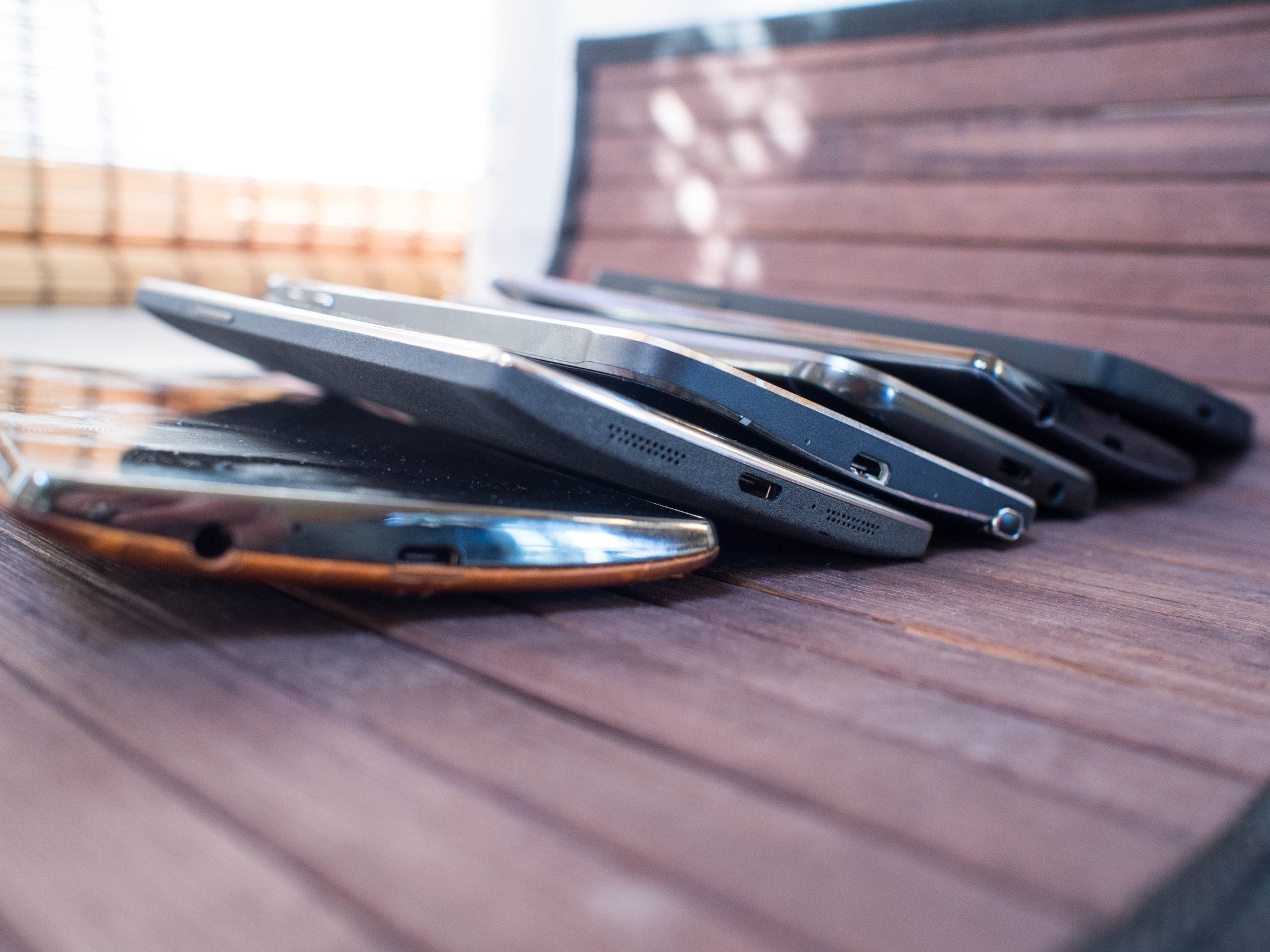What you need to know about U.S. carrier plans and subsidies

I forgot what it's like to actually buy a smartphone. I've been living in a bubble because of my privileged position as a former smartphone reviewer and I missed out on the fact that carrier subsidies aren't really a thing anymore.
Back in the day—that is to say, a mere two years ago—you could purchase the latest smartphone at a significant discount after signing on for another two years of service. But in the last year, U.S. carriers have effectively changed their policies so that their customers have to either finance or lease their smartphones, or just buy them outright.
Are there any major carriers still offering subsidies? The answer is, not really. But that doesn't mean that purchasing your next smartphone has to be a daunting experience. Here's what the four major U.S. carriers are offering in terms of upgrades.
Tip: Most of the major carriers have special offers throughout the year that could save you some cash on your next device. For instance, Verizon offers up to $300 trade-in value for your old smartphone when you upgrade or add a line on select devices. These deals change from time to time, but like buying a car, if you can wait to upgrade until the next promotion, it could afford you some major savings.
Verizon Wireless
At present, Verizon only offers two smartphone buying options: Financing the phone with monthly payments, or buying the phone outright. By default, Big Red will allow you to pay for your phone over the course of 24 months, or two years from your purchase date. For instance, if you wanted to buy the 32GB Samsung Galaxy S7, you'd be paying $28 a month until you reach the $672 retail price. Alternatively, you could also put some money down, like $200, and only pay $19.67 per month for 24 months. Unfortunately, you can't pay extra towards the balance of the phone each month after the fact, though you can choose to pay it off entirely at any time if you have the funds.
Big Red will allow you to pay for your phone over the course of 24 months.
Long time customers have a little more luck. Verizon stopped offering subsidies to new customers late last summer, but if you were on contract at that time and you're only now considering an upgrade, you can still buy your next smartphone at a discount until Verizon decides otherwise.
AT&T
Like Verizon, AT&T allows you to pay for your smartphone over time or in one lump sum. There are is an option if you're aching to upgrade early on, however, and depending on your credit, you might even have the luxury of paying off your phone slowly, up to 30 months after initial purchase.
Be an expert in 5 minutes
Get the latest news from Android Central, your trusted companion in the world of Android
AT&T Next is a bit more flexible than Verizon's offering.
AT&T's financing plan is called AT&T Next, and it's a bit more flexible than Verizon's offerings. For example, if you're looking to upgrade to the 32GB Galaxy S7 edge and you have a good credit score, you can choose to put nothing down and pay $36.50 a month for 30 months. You could also lower your monthly rate by adding on an optional down payment and then choose to pay off your device over 24, 18, or 12 months if you qualify.
AT&T also offers a Next Every Year program, which makes you eligible for a discount on a new phone with a trade-in, but only after your current device is halfway paid off (this takes roughly one year). And if you cancel your service in the middle of paying off the device, you'll have to pay it in full before you can leave.
Sprint
If you're a Sprint subscriber, you can choose to lease your phone, buy it outright, or pay for it in monthly installments.
Sprint's leasing program works similarly to leasing a car. You choose almost any phone you want and then pay for it over the period of 24 months. At the end of the lease, you can choose to pay off the remaining balance on the device, trade it in for a new model, or continue paying month-to-month until you figure out what you want. There's also a $5 monthly Early Upgrade option, though you'll have to have paid toward your device for 12 consecutive months before you can upgrade to a new phone. And if you're crazy for every new Samsung device, you can sign up for the Galaxy Forever leasing program.
Sprint's leasing program is a bit problematic. You don't actually own the device unless you choose the purchase option and should something major happen to the device in your care before it's paid off, you'll be liable for the Damaged Device Fee unless you're enrolled in the Total Equipment Protection plan, which also costs a monthly fee.
Sprint's leasing program is problematic in that you don't actually own the device.
At the end of it all, Sprint's leasing program doesn't sound like the best deal. You'll have to pile on program fees just to ensure you're not paying up the wazoo at the end of the lease, and if you decide to keep the phone, you'll actually be paying more than the current value of the device at the end of the leasing terms. The full terms of Sprint's leasing program are here{.nofollow}.
It's also unclear if Sprint has done away with subsidies. On its cell phone upgrades page, Sprint says, "If you have completed a 2-year commitment, you can upgrade to another discounted device if you enter into a new 2-year Service Agreement." This applies only to those customers that are paying at least $40 a month for their bill.
T-Mobile
T-Mobile's Jump program costs $10 a month and includes device insurance. Once you're signed up, you'll pay for the device in monthly installments, and after it's halfway paid off, you can trade it in for a new one.
T-Mobile will let you pay for your phone outright or in 24 month installments.
Like Verizon, T-Mobile will also let you pay for your phone outright, or in installments over 24 months, though you may have to fork over a down payment depending on your credit score. At the very least, that down payment goes towards the full price of the phone. You can also choose to pay extra each month so that your phone is paid off sooner, though you'll have to file that separately from your monthly bill so that it's registered in the system as a device payment.
Lastly, T-Mobile offers a leasing program called Jump! On Demand, which is great for smartphone enthusiasts who are keen on having the latest and greatest but don't necessarily want to commit to shelling out all the cash at once. You'll essentially be making monthly payments to use the phone, though you'll never actually own it. The upside you can walk into any T-Mobile store and trade your months-old phone in for a new one, up to three times in a year. But it also means that you can't get too attached to your daily driver.
Florence Ion was formerly an editor and columnist at Android Central. She writes about Android-powered devices of all types and explores their usefulness in her everyday life. You can follow her on Twitter or watch her Tuesday nights on All About Android.

